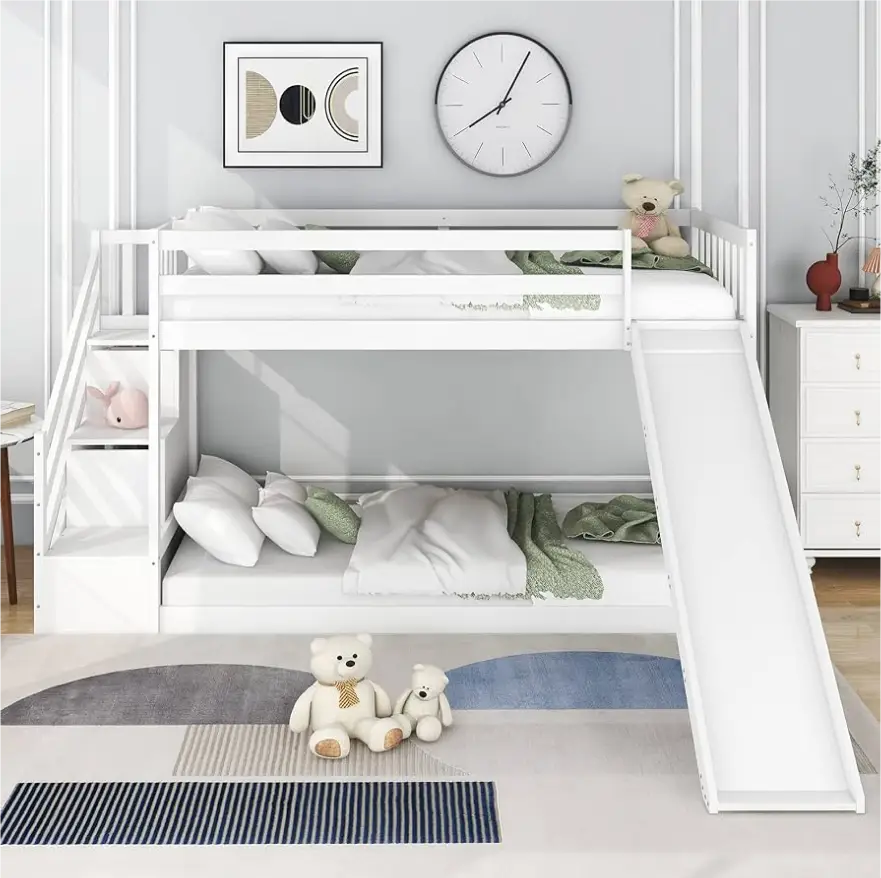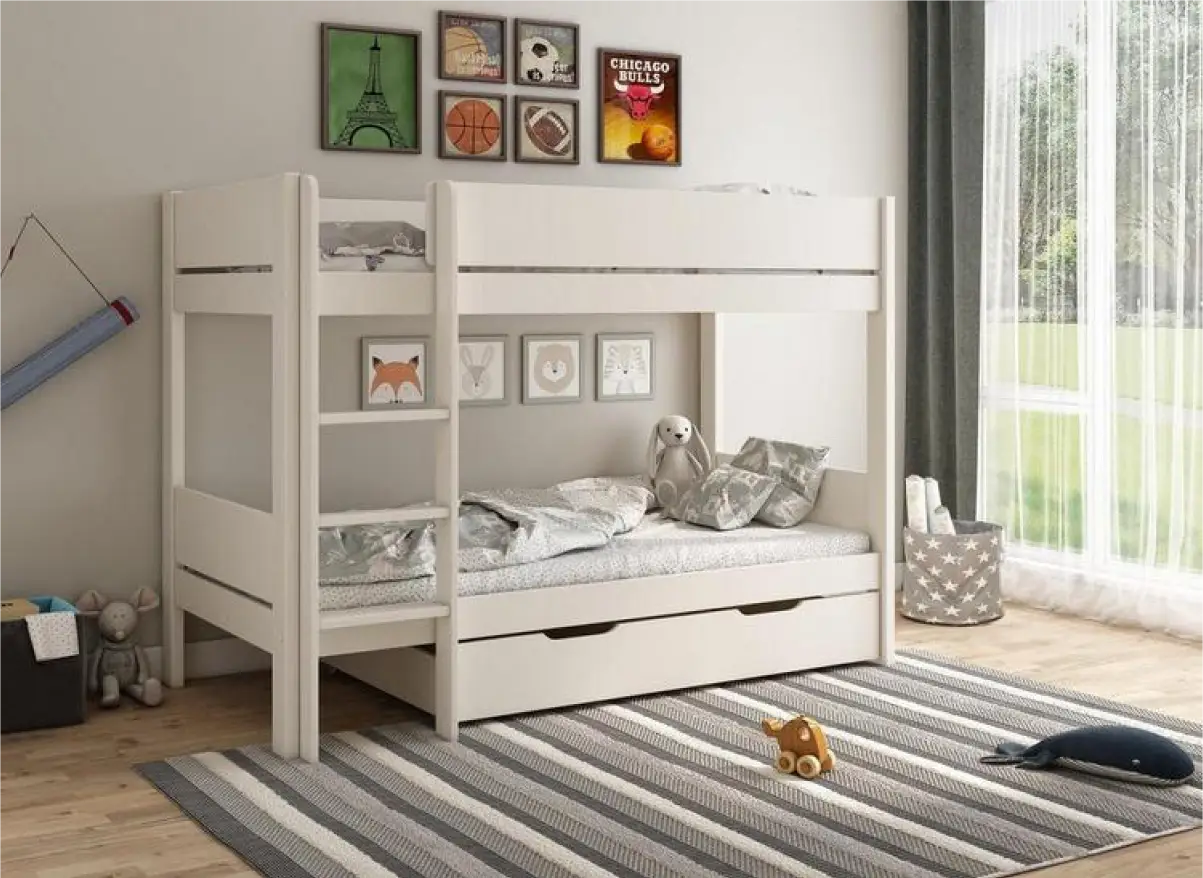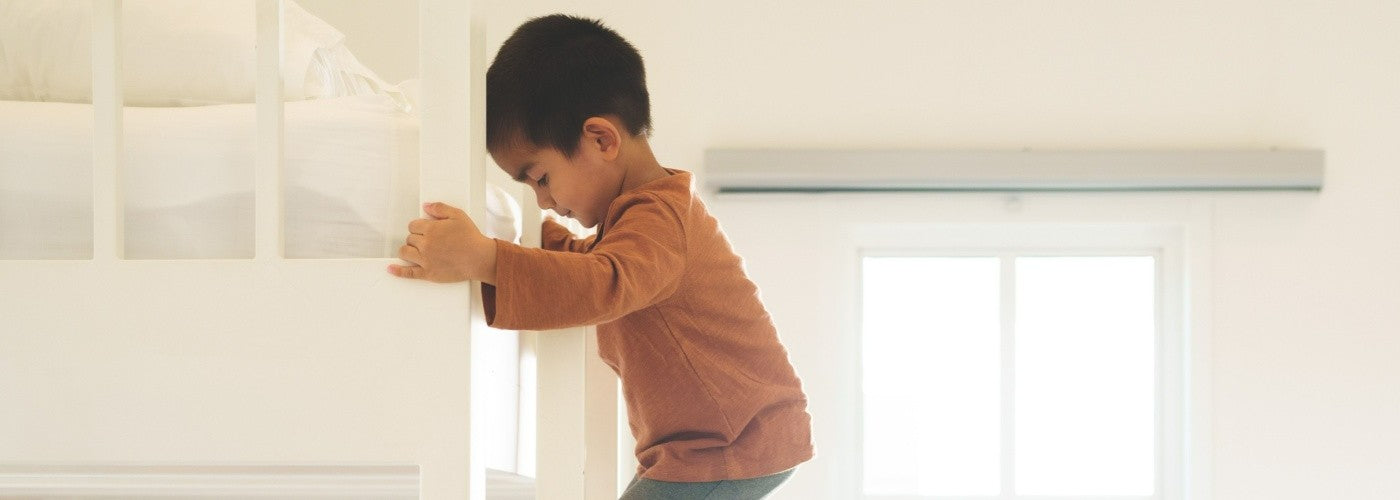For as long as anybody can remember, bunk beds have been around in family homes. If you have young children and need the additional floor space or room for more furniture to cater for all of their clothes, you likely either have a bunk bed or you've considered it before.
When choosing a bunk bed for younger kids, there are a few things to consider.
First, they must be old enough to be deemed safe to use bunk beds. This is because a young child sleeping on the top bunk must be trusted to stay safe up there. Essentially, they must be old enough to know the dangers of climbing and playing around on the top bunk.
The other thing to consider is the height of the bunk beds. They must fit in your desired room, for a start, but they must also be the right height for your little ones.
So, what height are bunk beds? How are they different to a loft bed or a low sleeper bed? And what are the benefits of bunk beds?
Continue reading to find out.
What are bunk beds?
Bunk beds are defined as at least two beds stacked on top of one another to form a single stacked bed frame.
If you need a space-saving solution for your children's rooms, moving them from toddler beds to a single bunk bed is a brilliant way to open up the bedroom.
Most bunk beds have two beds, but tall bunk beds with three beds or more are now available. These are specialised bed frames suited to households with several children and a serious lack of space.
History of bunk beds
If we go back as far as ancient Egypt, pharaohs and their families slept on elevated bed frames made from luxurious materials. It's unclear if these were built like a bunk bed or a loft bed, but historians know that the ancient Egyptians slept in elevated positions.
Standard bunk beds, as we know them, were first used by sailors in the 16th century. The beds were suspended from the ceilings or walls of the ship and were made from canvas or lightweight materials, making them easy to store during the day.
During the 18th century, prisons and military barracks used bunk beds to maximise space. These beds were made from wood and stacked on top of one another to fit more bodies into a small sleeping space.
These were the blueprints for the domestic bunk beds used by families around the world today.
How tall are bunk beds?
There is no standard bunk bed height.
This is because many bunk beds vary in design to cater to different ages, room sizes and needs. Most bunk beds, however, will measure between five and six feet (152 - 182cm) tall.
Let's take a look at the average heights for some of the most popular bunk bed options:
- Low Bunk Beds - (Around 123 cm) – perfect for younger children, low bunks keep the sleeping area close to the ground for easy access and added peace of mind for parents.
- Standard Bunk Beds - (Around 155 cm) – a classic design that suits most bedrooms, these medium-height bunks offer a great balance of space-saving and comfort for older kids.
- Mid Sleeper Beds - (Around 155 cm) – not quite a full bunk, but raised enough to create useful space below for storage, play, or study—ideal for smaller bedrooms.
- High Sleeper Beds - (Around 185 cm) – great for maximising floor space, these elevated beds free up the area below for a desk, chill-out zone, or extra storage.
- Triple Sleeper Bunk Beds - (Up to 198 cm) – designed for larger families or frequent sleepovers, these bunks sleep three and often feature a double bed on the bottom and a single on top.
The height of a bunk bed can also be changed by its storage features. For example, having drawers underneath the frame may make it taller compared to those without them. If you could use the additional storage space and have a room that's tall enough, we highly recommend considering it!
Remember: if your child's bedroom has a sloped ceiling, height may be restricted. Make sure to bear this in mind while looking for a new bunk bed, as some options might end up being too tall for your needs.
Why does bunk bed height matter?
It’s not just about whether a bunk bed fits in the room — it’s about making sure your kids can use it comfortably and safely. No one wants their child to sit up in the top bunk and bump their head on the ceiling!
So, how can you avoid this? It all starts with understanding how bunk bed height is measured.
Bunk beds are typically measured by the height of the frame as it touches the floor. You'll find this measurement in the bed frame's specifications.
There’s one more important step: making sure there’s enough headroom above the top bunk. To keep things safe and comfy, you should allow at least 76 cm of space between the top of the mattress and the ceiling. This gives your child enough room to sit up without any unwanted knocks.
Does the top bunk mattress affect the height?
When considering purchasing a bunk bed for your child's bedroom, you must also think about the mattress you'll use on the upper bunk.
Typically, you'll buy the same mattress for the bottom bunk as you do for the top bunk. However, you must ensure the top bunk mattress isn't too high, so your little one isn't in danger of being higher than the safety rails.
The top bunk mattress should be no higher than 16cm, as this will still provide plenty of comfort for sleeping and will ensure the safety rails can do their job.
What are the benefits of bunk beds?
Bunk beds offer many advantages and features compared to standard beds, including additional space, cost savings, and more.
Extra floor space
The first feature you'll notice with bunk beds is the additional floor space in the bedroom. If you have young children who share a bedroom, a bunk bed will create much more space for them to play in.
It also allows you to utilise storage furniture while still giving your little ones plenty of room to play with their toys.
Accommodate multiple sleepers
An obvious benefit of bunk beds is the ability for more than one person to sleep in the same bedroom. For small homes or households with multiple children, sharing a bedroom is a necessity, and you can easily do this with bunk beds.
If your children are young, then they could easily have their cousins or friends over for a sleepover, too, with everyone easily fitting into the single-size bunk beds.
Cost-effective
Bunk beds are also friendly on your wallet.
The alternative to bunk beds is having two single beds in a bedroom, which comes at a higher cost. Bunk beds, generally, are more cost-effective than buying two separate beds.
They can occasionally come as a package deal, too, with bunk beds available with included mattresses.
Imagination and play
Finally, bunk beds offer children of all ages a place to play and imagine.
By simply draping a blanket or sheet over the side of the bed, their sleeping space can transform into a spaceship, a race car, and so much more.
Buy a high-quality bunk bed from Bunk Beds
At Bunk Beds, we specialise in – you guessed it – bunk beds!
Here, you can find the bunk bed that's perfect for your children's bedroom. We have a huge range of designs, colours, and materials to choose from – and all at affordable prices.
If you don't need a bunk bed, but would prefer a bed that creates space in your little one's bedroom, we also have a loft bed range that you'll be delighted with.
Whatever type of children's bed you need, you'll find it at Bunk Beds. If you're seeking more information about our bunk beds, don't hesitate to contact us.





